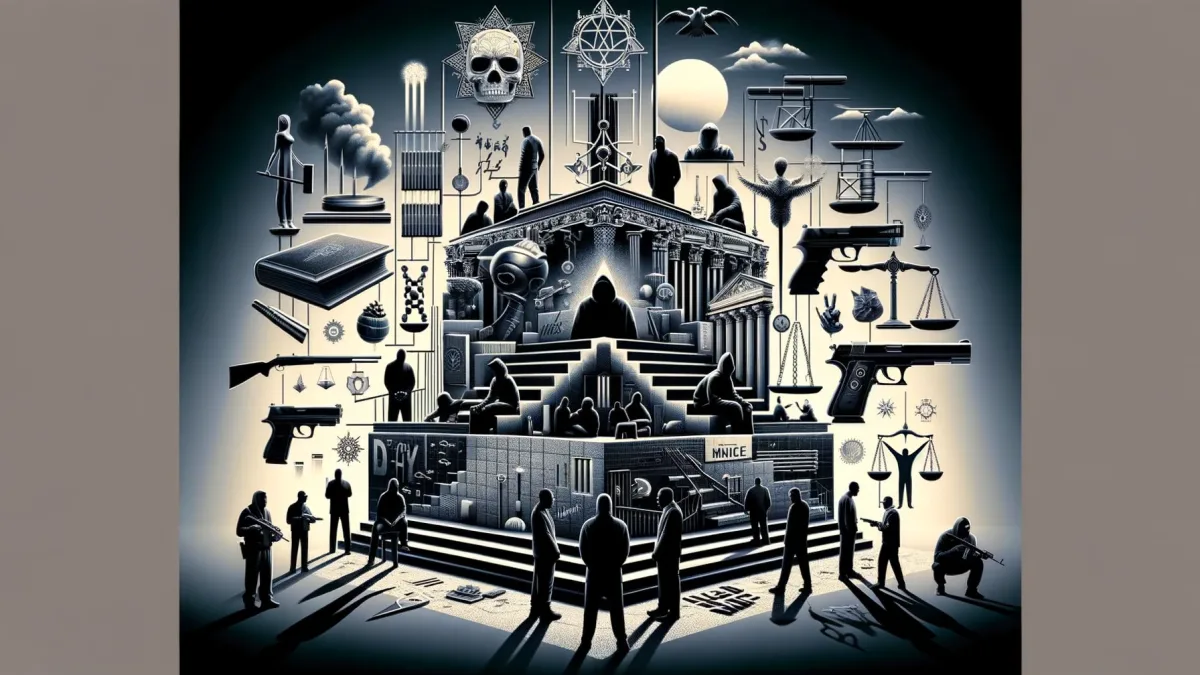Hello there! Whether you’re a crime novelist seeking authenticity in your narrative, a concerned citizen trying to understand news reports better, or simply curious about gang culture, you’ve likely encountered a range of jargon that seems cryptic. Today, we’re unpacking one such term: “DP” in gang parlance. So, let’s dive into this underworld vernacular, shall we?
Gang Culture and Its Lexicon
Gang culture, with its roots deeply embedded in various socio-economic and historical contexts, has developed its own language—a lexicon that often serves multiple purposes: identity, secrecy, and solidarity. Understanding this jargon can provide insights into gang dynamics and operations.
DP: A Dual Meaning
In gang terms, “DP” can stand for “Discipline” or “Punishment.” It’s a term used to refer to the internal enforcement actions taken against members for violations of gang rules or norms. This concept underscores the strict hierarchical and rule-based nature of many gangs, where loyalty and adherence to the group’s code are paramount.
Disciplinary Actions Within Gang Structures
The nature of a DP can vary significantly from one gang to another and can depend on the severity of the offense. It might range from physical beatings to fines, or in extreme cases, more severe forms of punishment. The process and execution of a DP are typically decided by higher-ranking members or a council within the gang, emphasizing the structured, albeit illicit, governance within these groups.
Keyword Spotlight: “Gang Governance”
“Gang Governance” refers to the internal rules, decision-making processes, and disciplinary mechanisms that guide gang operations and member behavior. While inherently unlawful and often violent, these structures allow gangs to maintain order, loyalty, and control over their activities and members.
The Legal Implications of Gang DPs
The concept of DPs brings to light the violent and often retaliatory nature of gang culture, posing significant challenges for law enforcement and the legal system. DPs not only signify the presence of gang activity but also contribute to the cycle of violence and crime associated with gang operations.
Addressing Gang Violence: A Multifaceted Approach
Combatting gang violence and understanding the intricacies of gang culture, including terms like DP, requires a multifaceted approach. Law enforcement agencies often work in conjunction with community organizations, social services, and legal professionals to address the root causes of gang affiliation and activity, such as poverty, social exclusion, and lack of opportunities.
The Role of Legal Professionals
Legal professionals play a crucial role in navigating the complexities of cases involving gang activities. From defending those accused of gang-related crimes to prosecuting gang members for criminal activities, understanding gang terminology and culture is vital for effective legal practice in this area.
Final Thoughts: Beyond the Acronym
While “DP” is just one term in the vast lexicon of gang terminology, it offers a window into the complex world of gang dynamics and the challenges faced by individuals and communities affected by gang activity. For those in the legal field, grasping these terms is part of the broader endeavor to ensure justice and safety in the face of organized crime.
As we continue to explore and understand the language of the streets, it’s crucial to approach the topic with a sense of responsibility and a desire to contribute positively to the discourse on crime prevention and community resilience.









Leave a Reply